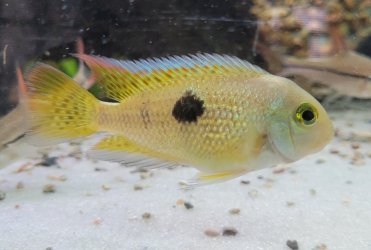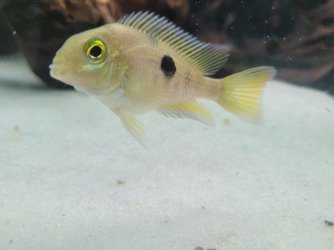I had one over 10 years ago, who got to about 2 years old one of the best fish I've ever kept stunning colours, an amazing personality and the more I've learned about them the more fascinating I find them.
View attachment 310011
IMO there is more than one species, but they have never been studied enough (or properly) to determine it. Decades ago they were 3 species but then as the whole of the Central taxonomy was reviewed they were put into one. In 2007 they were studied from preserved specimens (not live!) and were put into a different name but that got reversed in the latest big central review. People keep trying to put Neetroplus in with them but again I think thats crazy.
Other than their colours, shape and physiology they are the only cichlid species with non adhesive eggs, the only cichlid in Central America to tunnel with their nests (I can only think of one South that is rumoured to do it - Threadfin Acaras) and they have a symbiotic relationship with a predator...
Reasons why I think there is more than one species - colour, some are blue and yellow some are orange, some are green. Some have a prominent spot where the body meets the dorsal fin, some have irregular black marks over the body, some have stripes in the back half of the body. Some make nests in pits in the sand, some dig nests into the river bank - and that seems to vary between locations.
Like I say... know far too much and don't get much chance to talk about them...




